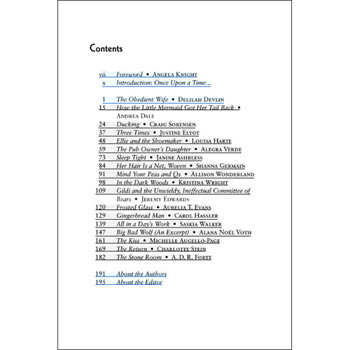Life in the Middle Ages was hard: Famine. Bubonic plague. The ever-present threat of witch burning. Even when the drama was minimal, generally speaking, you were filthy and crawling with parasites while you worked yourself to an early grave. “The kids’ stories we know now were the NC-17 escapist fare of the day, rife with sex and violence,” explains James B., who teaches a variety of literature classes at a small college in rural Washington. “They were the great grandparents of the horror movie, the fantasy genre, the comic book.”
Though G-Rated Disney fare has long been a sacred cash cow for Hollywood, the deeper naughty and very adult implications of fairy tales is something that has been lost on current auteurs. This year’s “Red Riding Hood,” which balances the primordial menace of the beast with a beautiful young woman’s sexual awakening, was one of the first in a coming string of classic fairy tale-inspired films that have been repackaged for older audiences. Soon, we’ll have two versions of “Snow White” with Charlize Theron and Julia Roberts each starring as the treacherous queen, a contemporary take on “Jack and the Beanstalk,” and a dark spin on “Pinocchio.” With Guillermo del Toro directing, I’ll be eager to see what wicked endeavors they script for that legendary proboscis.
“These kinks and fetishes aren’t concepts that came about with the advent of the camera,” says James. “Many of these ‘immoral’ practices have been going on for millennia.”
Though G-Rated Disney fare has long been a sacred cash cow for Hollywood, the deeper naughty and very adult implications of fairy tales is something that has been lost on current auteurs. This year’s “Red Riding Hood,” which balances the primordial menace of the beast with a beautiful young woman’s sexual awakening, was one of the first in a coming string of classic fairy tale-inspired films that have been repackaged for older audiences. Soon, we’ll have two versions of “Snow White” with Charlize Theron and Julia Roberts each starring as the treacherous queen, a contemporary take on “Jack and the Beanstalk,” and a dark spin on “Pinocchio.” With Guillermo del Toro directing, I’ll be eager to see what wicked endeavors they script for that legendary proboscis.
“These kinks and fetishes aren’t concepts that came about with the advent of the camera,” says James. “Many of these ‘immoral’ practices have been going on for millennia.”





Hello to my new collection item! THANK YOU SO MUCH